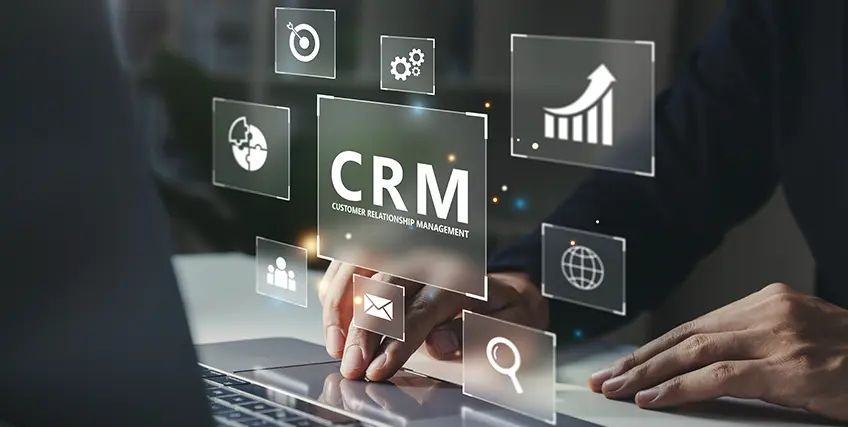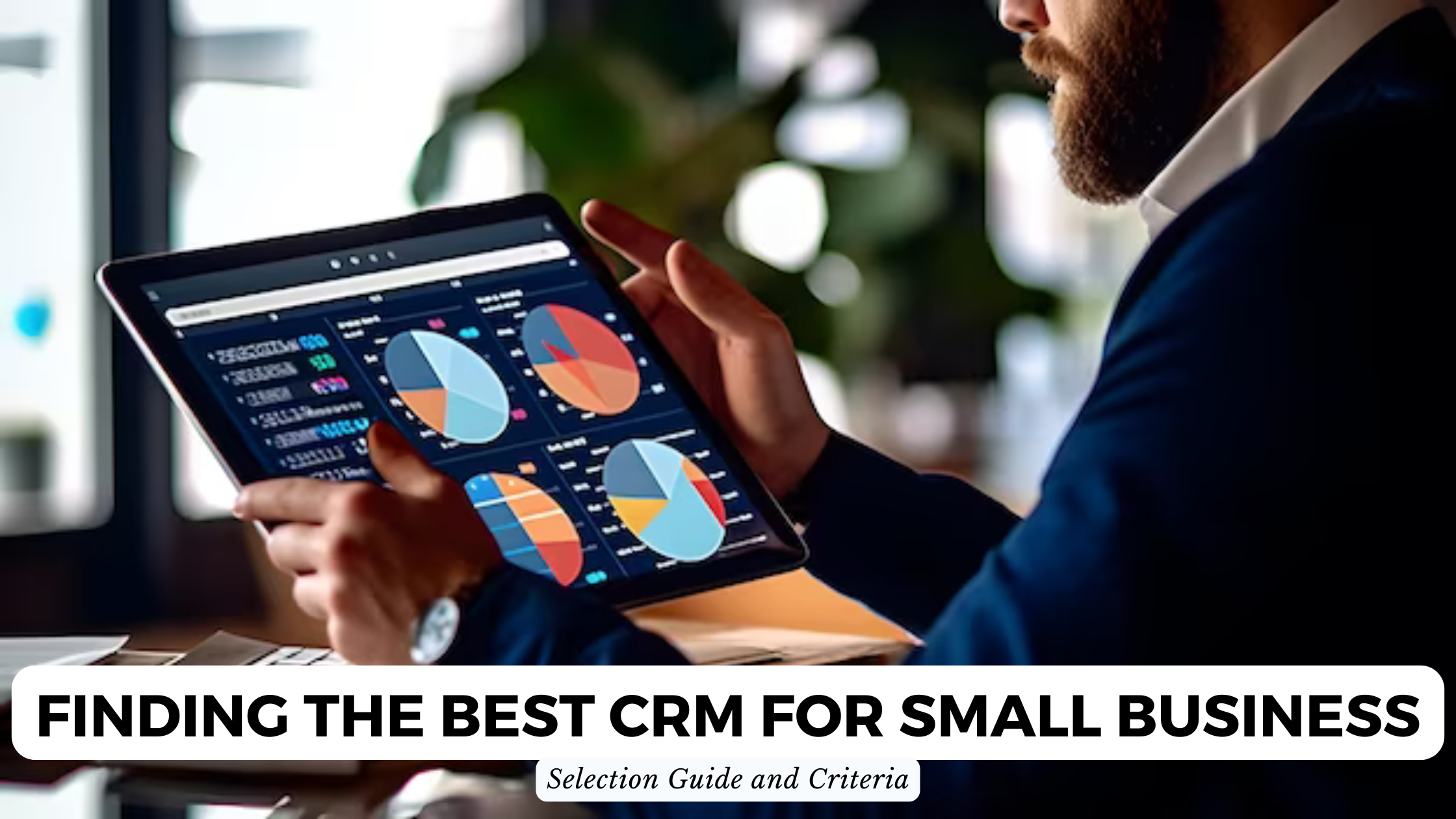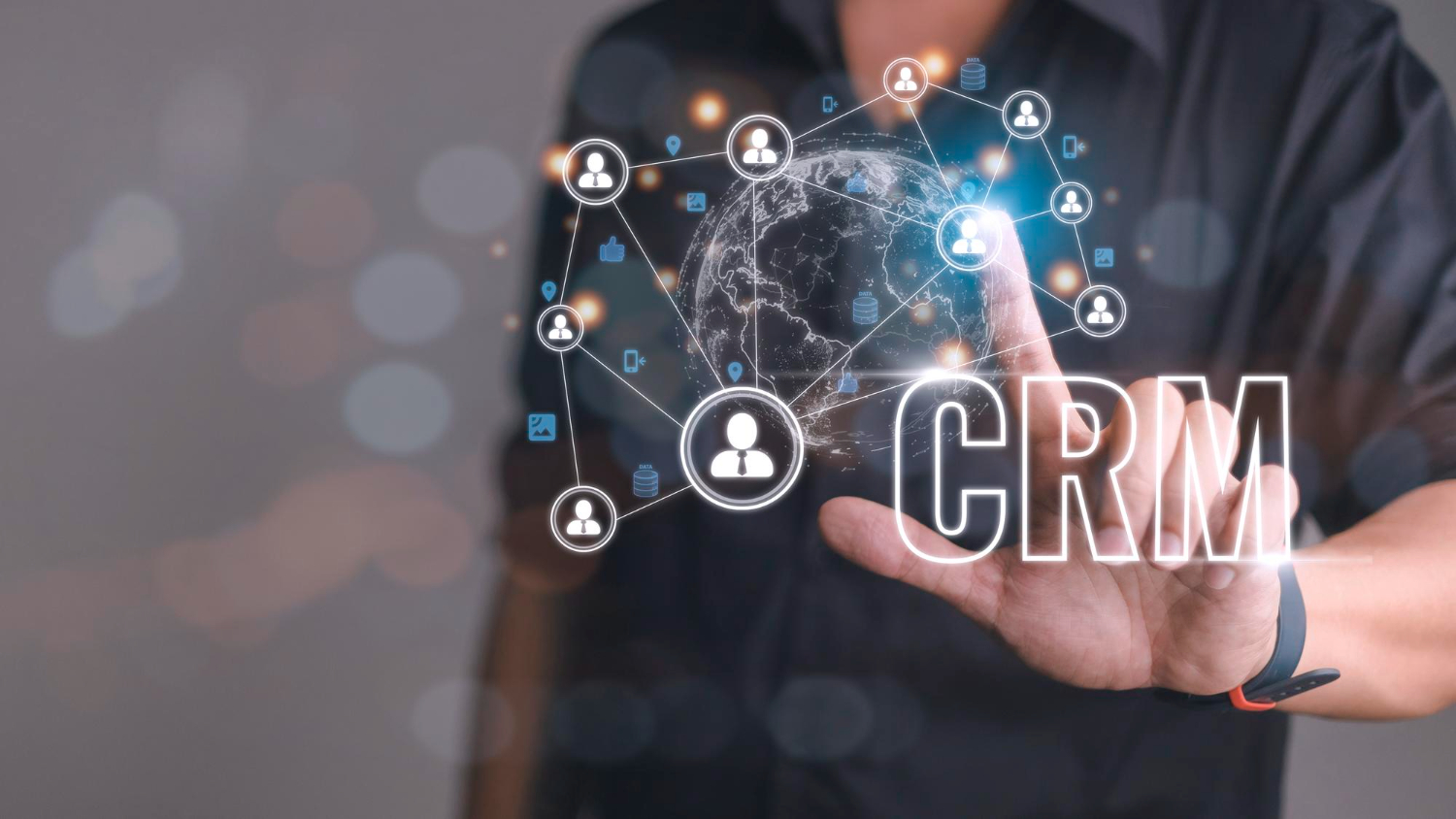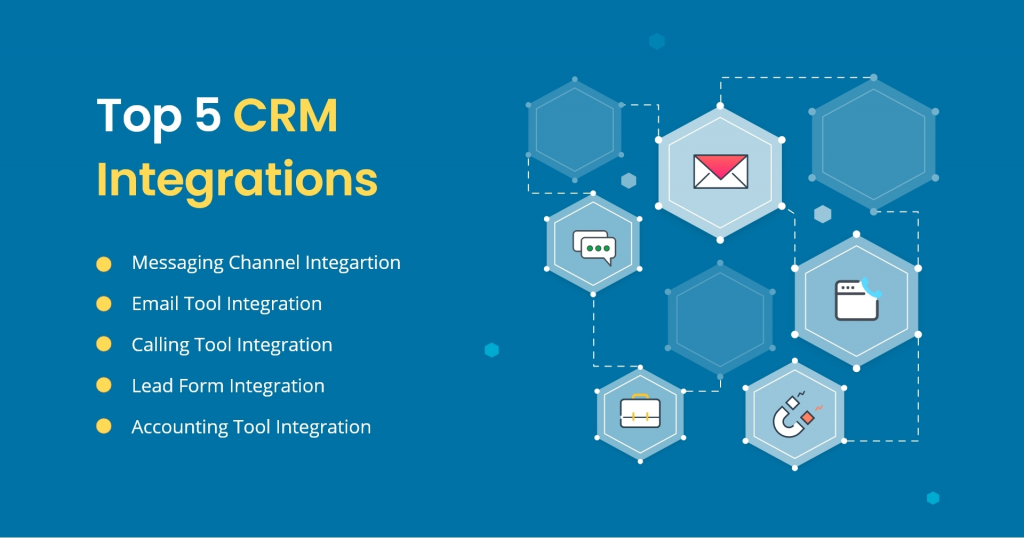Small Business CRM Security in 2025: Protecting Your Customer Data in a Changing World

Small Business CRM Security in 2025: A Comprehensive Guide
The digital landscape is evolving at warp speed. What was cutting-edge security yesterday might be obsolete tomorrow. For small businesses, navigating this environment can feel like walking a tightrope. Customer Relationship Management (CRM) systems have become indispensable tools, but they also represent a treasure trove of sensitive data. This article dives deep into the world of small business CRM security in 2025, providing a roadmap for protecting your valuable customer information and ensuring business continuity.
The Rising Stakes: Why CRM Security Matters More Than Ever
The reasons for prioritizing CRM security are more compelling than ever. Cyber threats are becoming more sophisticated, data breaches are more frequent, and the consequences are more severe. Here’s a breakdown of the key factors driving the need for robust CRM security:
- Increased Cyberattacks: Cybercriminals are constantly seeking new ways to exploit vulnerabilities. Small businesses, often perceived as easier targets than large corporations, are increasingly in the crosshairs. Ransomware attacks, phishing scams, and malware infections are all on the rise.
- Data Breach Consequences: The fallout from a data breach can be devastating. It can lead to financial losses (including regulatory fines, legal fees, and recovery costs), reputational damage, and a loss of customer trust.
- Evolving Regulatory Landscape: Data privacy regulations like GDPR, CCPA, and others are becoming stricter. Non-compliance can result in hefty penalties. Staying ahead of these regulations is crucial for businesses of all sizes.
- Remote Work Challenges: The shift to remote work has expanded the attack surface. Employees accessing CRM systems from home networks or using personal devices introduce new security risks.
- Dependency on CRM: CRM systems are now central to business operations. Any disruption to the system, whether due to a cyberattack or technical failure, can cripple a business.
Understanding the Threat Landscape in 2025
To effectively secure your CRM, you need to understand the types of threats you’ll likely face in 2025. The following are some of the most prominent:
Phishing and Social Engineering
Phishing attacks will remain a persistent threat. Cybercriminals are becoming increasingly adept at crafting sophisticated phishing emails that trick employees into divulging sensitive information or clicking malicious links. Social engineering tactics, such as impersonating IT support or other trusted individuals, will also be used to gain access to CRM systems.
Ransomware Attacks
Ransomware will continue to be a major threat. Cybercriminals will encrypt CRM data and demand a ransom for its release. The frequency and sophistication of ransomware attacks are expected to increase, making it crucial to have robust backup and recovery plans in place.
Malware and Advanced Persistent Threats (APTs)
Malware, including viruses, Trojans, and spyware, can be used to steal data or gain unauthorized access to CRM systems. APTs are sophisticated, long-term attacks where cybercriminals infiltrate a system and remain undetected for extended periods, gathering information and preparing for more damaging attacks.
Insider Threats
Insider threats, whether malicious or accidental, pose a significant risk. Employees with authorized access to CRM data can inadvertently or intentionally compromise security. This could involve data theft, data leaks, or the misuse of customer information.
Supply Chain Attacks
CRM systems often integrate with other third-party applications and services. Cybercriminals can exploit vulnerabilities in these third-party components to gain access to CRM data. Supply chain attacks are becoming increasingly prevalent.
Essential Security Measures for Your CRM in 2025
Protecting your CRM requires a multi-layered approach. Here are some essential security measures to implement:
1. Strong Authentication and Access Controls
- Multi-Factor Authentication (MFA): Implement MFA for all users, requiring them to verify their identity using multiple methods (e.g., password, code from a mobile app, biometric scan).
- Role-Based Access Control (RBAC): Grant users only the minimum level of access necessary to perform their job functions.
- Regular Password Updates: Enforce strong password policies and require users to change their passwords regularly.
- Account Lockout Policies: Implement policies that lock out accounts after a certain number of failed login attempts.
2. Data Encryption
- Encryption at Rest: Encrypt data stored on your CRM servers and databases.
- Encryption in Transit: Use secure protocols (e.g., HTTPS) to encrypt data transmitted between users and the CRM system.
3. Regular Backups and Disaster Recovery
- Automated Backups: Implement automated, regular backups of your CRM data.
- Offsite Backups: Store backups in a separate, secure location (e.g., cloud storage) to protect against data loss due to a disaster or cyberattack.
- Disaster Recovery Plan: Develop and regularly test a disaster recovery plan that outlines how to restore your CRM system in the event of a failure or attack.
4. Security Audits and Vulnerability Assessments
- Regular Security Audits: Conduct regular security audits to identify vulnerabilities in your CRM system and infrastructure.
- Vulnerability Scanning: Use vulnerability scanning tools to proactively identify and address security weaknesses.
- Penetration Testing: Consider engaging ethical hackers to perform penetration testing to simulate real-world attacks and identify potential weaknesses.
5. Employee Training and Awareness
- Security Awareness Training: Provide regular security awareness training to employees to educate them about cyber threats, phishing scams, and other security risks.
- Phishing Simulation: Conduct phishing simulation exercises to test employees’ ability to identify and avoid phishing attacks.
- Data Privacy Training: Train employees on data privacy regulations and best practices for handling customer data.
6. CRM System Hardening
- Keep Software Updated: Regularly update your CRM software and all related components (e.g., operating systems, databases) to patch security vulnerabilities.
- Disable Unnecessary Features: Disable any features in your CRM system that are not required to reduce the attack surface.
- Configure Security Settings: Configure your CRM system’s security settings to align with industry best practices.
7. Intrusion Detection and Prevention Systems
- Implement IDS/IPS: Implement intrusion detection and prevention systems to monitor network traffic for malicious activity and automatically block or alert on suspicious behavior.
- Security Information and Event Management (SIEM): Consider using a SIEM system to collect and analyze security logs from multiple sources to identify and respond to security incidents.
8. Third-Party Risk Management
- Vendor Due Diligence: Conduct thorough due diligence on all third-party vendors that have access to your CRM data.
- Service Level Agreements (SLAs): Ensure that all third-party vendors have robust security measures in place and that these are documented in SLAs.
- Regular Monitoring: Regularly monitor the security practices of your third-party vendors.
Choosing the Right CRM System for Security
When selecting a CRM system, security should be a primary consideration. Here are some factors to evaluate:
- Security Features: Look for a CRM system that offers robust security features, such as MFA, encryption, access controls, and audit trails.
- Compliance Certifications: Choose a CRM system that complies with relevant security standards and regulations (e.g., ISO 27001, SOC 2).
- Vendor Reputation: Research the vendor’s reputation and security practices. Read reviews, check for security incidents, and assess their commitment to security.
- Data Residency: Consider where your data will be stored and whether it complies with data residency requirements in your region.
- Scalability and Flexibility: Choose a CRM system that can scale to meet your business needs and that offers the flexibility to integrate with other security tools.
Cloud vs. On-Premise CRM: Security Considerations
The decision to use a cloud-based or on-premise CRM system has significant security implications. Here’s a comparison:
Cloud CRM
- Advantages:
- Vendor Responsibility: The CRM vendor is typically responsible for the security of the infrastructure, data, and application.
- Automated Updates: Security updates and patches are usually applied automatically by the vendor.
- Scalability: Cloud CRM systems can easily scale to meet changing business needs.
- Cost-Effectiveness: Cloud CRM can often be more cost-effective, as it eliminates the need for hardware and IT staff to manage the system.
- Disadvantages:
- Vendor Dependence: You are dependent on the vendor’s security practices.
- Limited Control: You have less control over the underlying infrastructure.
- Data Residency Concerns: You may have limited control over where your data is stored.
On-Premise CRM
- Advantages:
- Greater Control: You have complete control over the security of the system and data.
- Data Residency: You can choose where your data is stored.
- Disadvantages:
- Higher Costs: Requires significant investment in hardware, software, and IT staff.
- Responsibility: You are fully responsible for the security of the system.
- Maintenance: Requires ongoing maintenance, security updates, and patching.
The best choice depends on your specific business needs and resources. Consider your risk tolerance, technical expertise, and budget when making your decision.
Building a Security-Conscious Culture
Technology alone isn’t enough to secure your CRM. You also need to cultivate a security-conscious culture within your organization. This involves:
- Leadership Support: Demonstrate a strong commitment to security from the top down.
- Employee Training: Provide regular and engaging security awareness training.
- Clear Policies and Procedures: Establish clear policies and procedures for data handling, access control, and incident response.
- Incident Response Plan: Develop and regularly test an incident response plan that outlines how to respond to security incidents.
- Regular Communication: Communicate security updates and best practices to employees regularly.
- Feedback and Improvement: Encourage employees to report security concerns and provide feedback on security practices.
Future Trends in CRM Security
The landscape of CRM security is constantly evolving. Here are some trends to watch for in 2025 and beyond:
- AI-Powered Security: Artificial intelligence (AI) and machine learning (ML) will play an increasingly important role in CRM security, automating threat detection, incident response, and vulnerability management.
- Zero Trust Architecture: Zero trust security, which assumes that no user or device can be trusted by default, will become more prevalent.
- Automation and Orchestration: Automation and orchestration will streamline security tasks, such as threat detection, incident response, and vulnerability management.
- Focus on Data Privacy: Data privacy regulations will continue to evolve, driving the need for stronger data privacy controls and practices.
- Increased Use of Biometrics: Biometric authentication methods, such as fingerprint scanning and facial recognition, will become more common.
Conclusion: Securing Your Future with a Secure CRM
Protecting your small business CRM in 2025 requires a proactive and multi-layered approach. By implementing the security measures outlined in this guide, cultivating a security-conscious culture, and staying informed about emerging threats and trends, you can safeguard your customer data, mitigate risks, and ensure the long-term success of your business. Remember, security isn’t a one-time fix; it’s an ongoing process that requires constant vigilance and adaptation. Invest in the right tools, train your employees, and stay informed, and you’ll be well-equipped to navigate the evolving security landscape and protect your most valuable asset: your customers’ trust.



